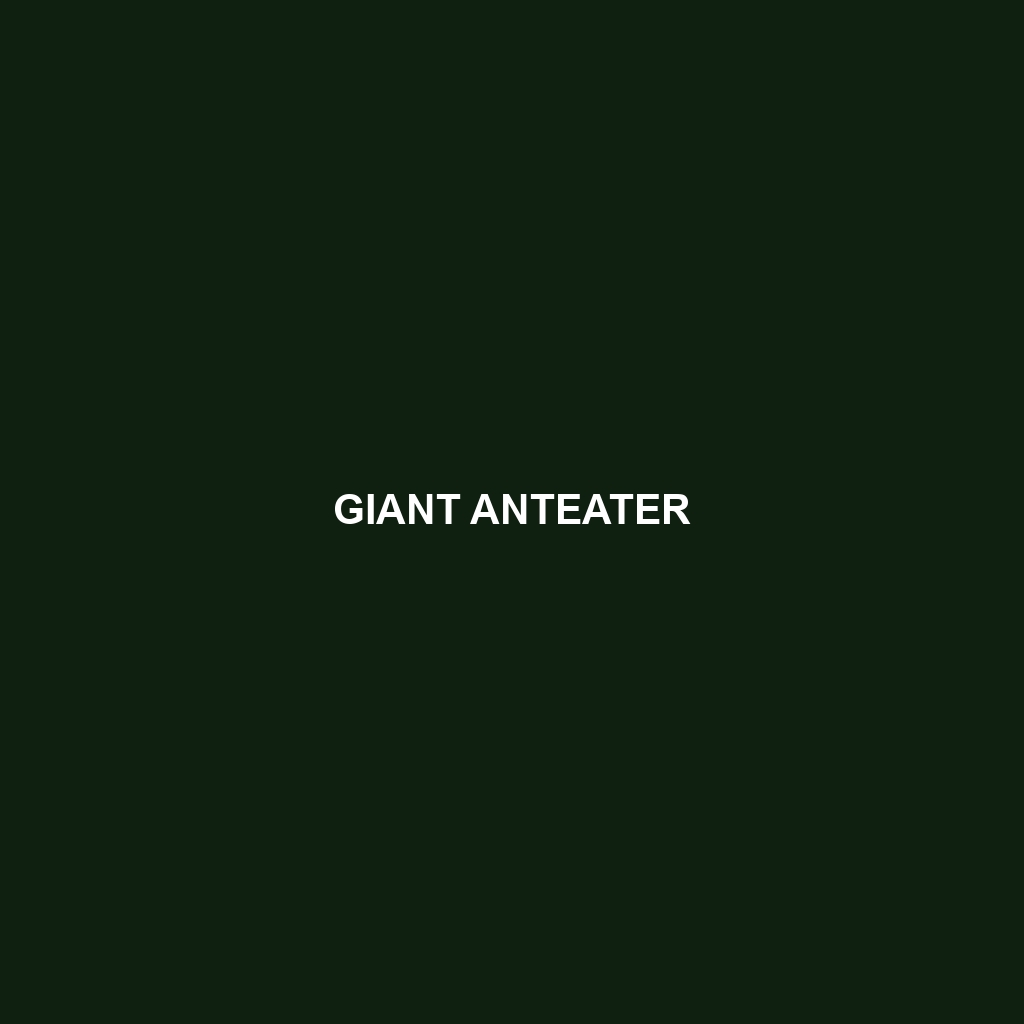Giant Anteater: Detailed Animal Attributes for Your Website
The Giant Anteater (Myrmecophaga tridactyla), also known as the Ant Bear, is a distinctive and fascinating mammal belonging to the family Myrmecophagidae. Native to Central and South America, this unique creature is renowned for its specialized diet of ants and termites, which it consumes using its elongated snout and long, sticky tongue. With its striking appearance and specialized adaptations, the Giant Anteater plays a crucial role in its ecosystem.
Physical Characteristics
Size:
Body Length: Ranges from 4 to 7 feet (1.2 to 2.1 meters), including the tail.
Tail Length: Approximately 2 to 3 feet (0.6 to 0.9 meters).
Weight: Typically between 60 to 140 pounds (27 to 63 kilograms).
Coloration:
Fur: The Giant Anteater has a coarse, grayish-brown coat with a prominent black stripe bordered by white that extends diagonally from the chest to the lower back.
Tail: The tail is bushy and covered with long, dark hair, often used for shading and camouflage.
Special Features:
Snout: Extremely elongated and tubular, housing a small mouth and no teeth.
Tongue: Can extend up to 2 feet (60 centimeters) and is covered in sticky saliva, ideal for capturing insects.
Claws: Sharp and curved, particularly on the forelimbs, used for breaking into ant and termite mounds.
Behaviors
Social Interactions:
Solitary Lifestyle: Giant Anteaters are primarily solitary animals, coming together only for mating and when a mother is raising her young.
Communication: They communicate through body language, scent marking, and occasional vocalizations.
Feeding Habits:
Diet: Primarily consists of ants and termites, which they lap up with their long tongues.
Feeding Technique: Uses powerful forelimbs to tear open insect mounds and quickly laps up insects before they can escape or mount a defense.
Daily Intake: Can consume up to 30,000 insects in a single day.
Ecological Roles:
Pest Control: By preying on ants and termites, Giant Anteaters help control the populations of these insects, contributing to the balance of their ecosystems.
Habitats
Range:
Found from Honduras in Central America through South America, including Brazil, Argentina, and Paraguay.
Preferred Habitats:
Grasslands: Open savannas where they can easily locate insect mounds.
Forests: Both rainforests and deciduous forests, which provide ample food resources.
Wetlands: Marshy areas where insect activity is high.
Adaptations
Physical Adaptations:
Thickened Skin: Protects them from ant and termite bites.
Long Claws: Efficient for breaking into tough insect mounds.
Strong Forelimbs: Aid in digging and foraging.
Behavioral Adaptations:
Nocturnal Activity: In some regions, they are more active at night to avoid the heat of the day and predators.
Energy Conservation: Slow metabolism and low body temperature (around 91°F or 33°C) help conserve energy.
Conservation Status
IUCN Red List: Vulnerable.
Threats: Habitat destruction due to agriculture, urban development, and wildfires. Roadkill and hunting also pose significant threats.
Conservation Efforts: Protected areas, habitat restoration projects, and public awareness campaigns are key to their conservation.
Fun Facts
Remarkable Tongue: The Giant Anteater’s tongue can flick in and out up to 150 times per minute!
No Teeth: Unlike most mammals, Giant Anteaters lack teeth and rely entirely on their powerful tongue and digestive enzymes.
Unique Gait: They walk on their knuckles to protect their long claws, giving them a distinctive gait.
By understanding and appreciating these remarkable creatures, we can work towards ensuring their conservation and the health of the ecosystems they inhabit.
